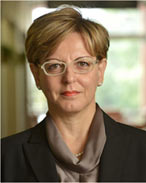Toward Creating an Inclusive SPS Community
Top Reasons to Join SPS Today!
1. IEEE Signal Processing Magazine
2. Signal Processing Digital Library*
3. Inside Signal Processing Newsletter
4. SPS Resource Center
5. Career advancement & recognition
6. Discounts on conferences and publications
7. Professional networking
8. Communities for students, young professionals, and women
9. Volunteer opportunities
10. Coming soon! PDH/CEU credits
Click here to learn more.
Toward Creating an Inclusive SPS Community

The underrepresentation of women in science, technology, engineering, and mathematics (STEM) fields is an issue that has been studied extensively [1] . Yet women still face many challenges, even though the demand for many STEM occupations has exploded. Many factors contribute to the low number of women in the STEM field. From an early age, girls are exposed to many cultural cues that dissuade them from participating in STEM fields. This gender bias is enforced by implicit or explicit messages from multiple sources—the toys girls receive at a young age, the classroom environment, the way that the media and popular culture depict the traits and talents of girls and women, the lack of women role models and encouragement from family and friends, and many other factors that deter girls and young women from visualizing themselves as scientists and pursuing STEM educations and careers. The power and predominance of these cues are confirmed by the low numbers of women in those fields. While progress has certainly been made over the past many decades, recently, many of those gains have plateaued or decreased, including women’s share of STEM jobs and the pay gap [6] , [7] . This long-time dearth of women in STEM academia, industry, and research positions makes it very difficult to foster meaningful cultural changes because these environments remain tailored primarily to men, offering few incentives, accommodations, and opportunities and little support to women, or in some cases, environments that are unwelcoming and even hostile for women.
The underrepresentation of women in science, technology, engineering, and mathematics (STEM) fields is an issue that has been studied extensively [1]. Yet women still face many challenges, even though the demand for many STEM occupations has exploded. Many factors contribute to the low number of women in the STEM field. From an early age, girls are exposed to many cultural cues that dissuade them from participating in STEM fields. This gender bias is enforced by implicit or explicit messages from multiple sources—the toys girls receive at a young age, the classroom environment, the way that the media and popular culture depict the traits and talents of girls and women, the lack of women role models and encouragement from family and friends, and many other factors that deter girls and young women from visualizing themselves as scientists and pursuing STEM educations and careers. The power and predominance of these cues are confirmed by the low numbers of women in those fields. While progress has certainly been made over the past many decades, recently, many of those gains have plateaued or decreased, including women’s share of STEM jobs and the pay gap [6], [7]. This long-time dearth of women in STEM academia, industry, and research positions makes it very difficult to foster meaningful cultural changes because these environments remain tailored primarily to men, offering few incentives, accommodations, and opportunities and little support to women, or in some cases, environments that are unwelcoming and even hostile for women.
This lack of diversity isn’t only a gender divide. Many other segments of society are underrepresented in STEM, including individuals from racial and ethnic minorities (particularly women of color) and from low-income socioeconomic backgrounds, individuals who identify as LGBTQ+, and people with disabilities.
SPS Social Media
- IEEE SPS Facebook Page https://www.facebook.com/ieeeSPS
- IEEE SPS X Page https://x.com/IEEEsps
- IEEE SPS Instagram Page https://www.instagram.com/ieeesps/?hl=en
- IEEE SPS LinkedIn Page https://www.linkedin.com/company/ieeesps/
- IEEE SPS YouTube Channel https://www.youtube.com/ieeeSPS














